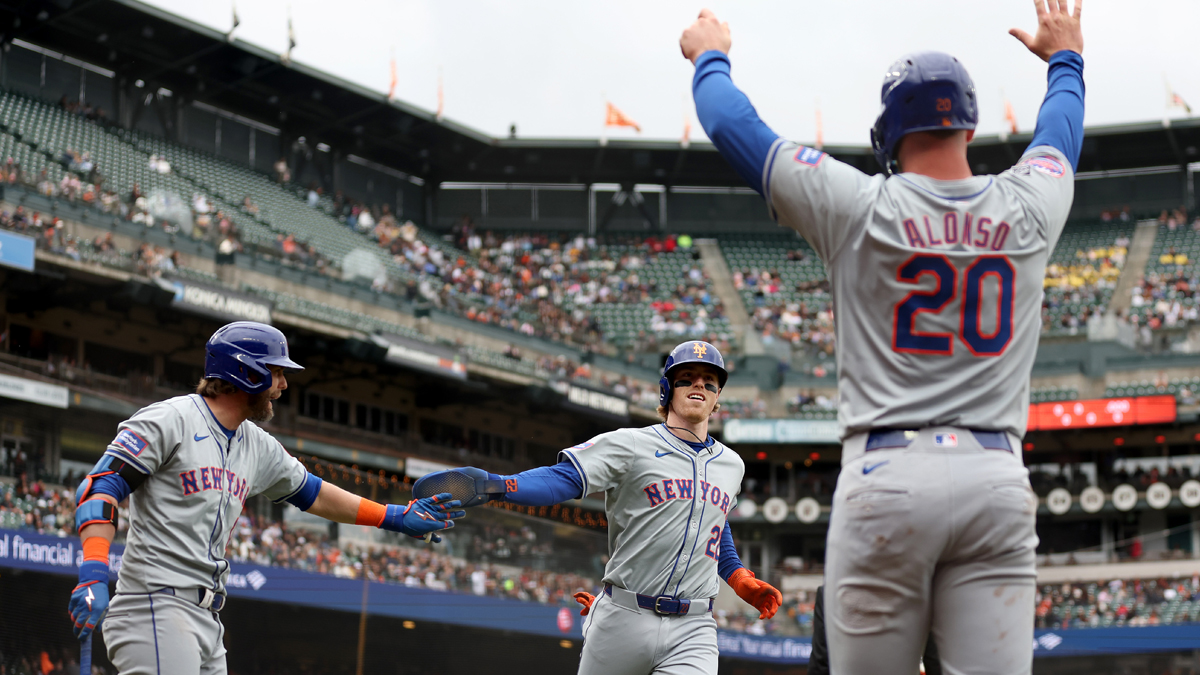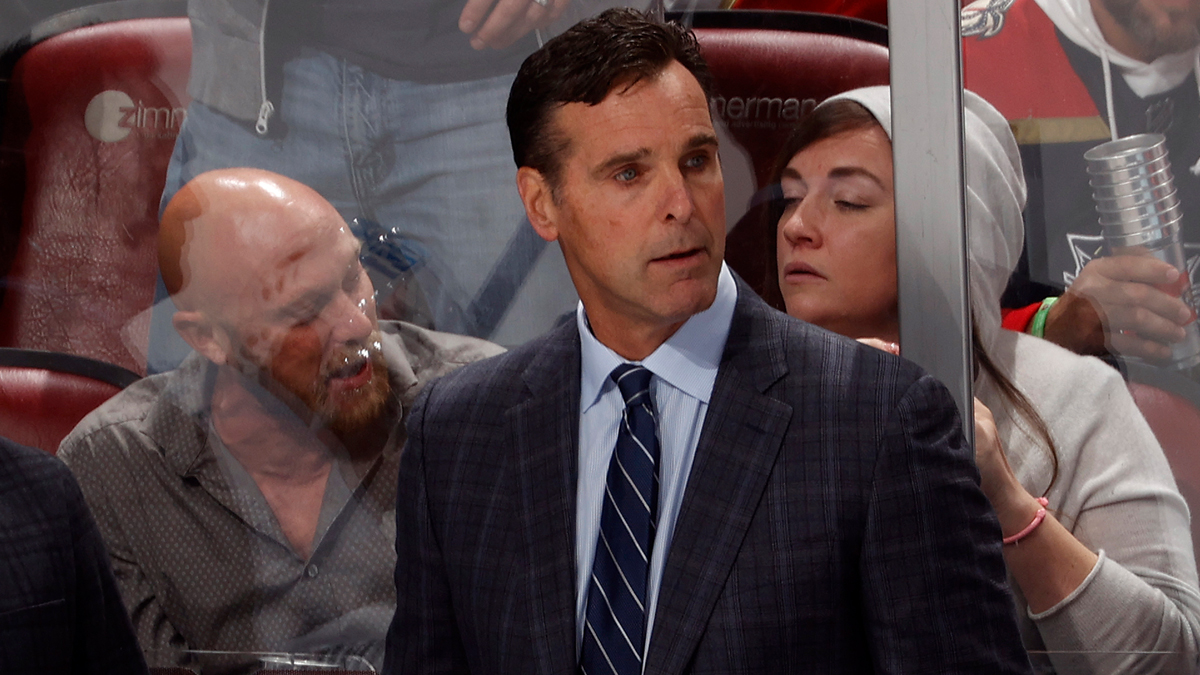It was February 22, 2013, and the Sharks were in Chicago for a game in the first half of the lockout-shortened season.
In the third period of a 1-1 tie, Blackhawks forward Brandon Saad accelerated towards the Sharks' end on what looked like a harmless two-on-two rush. Directly in front of Saad in the neutral zone was a backwards-skating Brent Burns, who puzzlingly slowed up, pivoted the wrong way, and allowed Saad far too much room to fire a wrist shot from the circle that cleanly beat Antti Niemi. It was the game-winner in a 2-1 Chicago victory.
In the hallway outside the visiting dressing room at United Center afterwards, then-coach Todd McLellan wasn't pleased.
"I thought that we let a player in a situation that wasn't very dangerous skate into a primary scoring spot without even challenging him," MeLellan said. "I'm not sure if our goalie was on the angle or not, but I'm disappointed we didn't challenge [Saad] earlier."
Translation: Burns misplayed it. Badly.
Burns, it was later revealed, was having difficulty with his mobility after an offseason surgery. About a month later, also partially because of that injury, he was converted into a power forward – and he was an effective one, at that. The thought of him eventually winning a Norris Trophy in his career would have been preposterous as the abbreviated 2013 season came to a close.
Sports
Four years later, though, it's happened. Burns was named as the NHL's most outstanding defenseman for the 2016-17 season at the NHL Awards show in Las Vegas on Wednesday night, the first Sharks player to ever capture the prestigious award. It capped off a dominant season for Burns, who even got some votes for the Hart Trophy as league MVP.
The path that Burns took to winning the Norris is as unique as his fashion sense.
* * *
After more than a season playing right wing, including the entirety of 2013-14 when he posted 22 goals and 48 points in 69 games, general manager Doug Wilson announced after the Sharks' disastrous first round choke job against the Kings that Burns would be going back to the blue line the next season.
It was a move that McLellan and the Sharks' coaching staff were never fully on board with, and when McLellan was asked in training camp whether Burns would stay on the blue line, he replied it was "a commitment, right now."
Burns would admit more than a year later that that ambiguity wasn't helpful, and it showed on the ice. While the 2014-15 season was a disaster for the Sharks on a number of fronts, Burns never looked comfortable in his own zone. Offensively, he was strong, posting 60 points in 82 games. But untimely turnovers, questionable decisions with the puck and poor positioning plagued him all season long. The Sharks missed the playoffs.
Internally, there were some in the Sharks organization – in addition to standing those behind the bench – that thought the team would never win consistently as long as Burns was playing 20 minutes a night on defense. He was just too erratic.
But the Sharks missing the playoffs that season may have proven to be a blessing in disguise, as least as far Burns is concerned. The defenseman joined Team Canada for the World Championships, coached by McLellan and assistant Pete DeBoer, and was dominant. He was named as the best defenseman in the tournament while the Canadiens won gold.
Soon after that, DeBoer took over the Sharks. There was no question in his mind that Burns was going to stay on the blue line in 2015-16, after he saw firsthand how Burns performed in the Worlds.
"I think there's going to be a comfort level that he's going to get to again," DeBoer said at the 2015 draft, shortly after taking the Sharks job. "He's coming [in] with a lot of confidence off the World Championships. I'm not worried about him defensively."
While there were still some kinks in Burns' game early in DeBoer's first season as the Sharks hovered around .500 through Christmas, the Wookiee kept improving. DeBoer and assistant coach Bob Boughner decided that the best way to handle Burns play was to allow him the freedom to roam, while pairing him with responsible free agent addition/defensive-minded defenseman Paul Martin. Burns was free from the shackles of the McLellan-Jim Johnson approach, which was a little too technical for his liking.
"I think it was great with Pete coming in and just saying, ‘hey, he's a d-man.' I think that set the tone a lot for me," Burns said late in April 2016.
By the end of the season, Burns was dominant. He ended up as a Norris Trophy finalist for the first time, ultimately finishing third, after he was second in the NHL in scoring among defensemen with 75 points while playing a sound defensive game, too. His play over the second half and in the playoffs catapulted the Sharks to their first-ever appearance in the Stanley Cup Final that June.
* * *
This season Burns picked up where he left off at the end of the Sharks' lengthy playoff run. He was far and away the team's most valuable player, leading the Sharks (and all NHL defensemen) with 76 points. His 29 goals were tops among NHL blueliners and tied for the Sharks team lead, while his 320 shots led the NHL.
Now one of the best two-way players in the NHL, skating as a forward for a season and a half helped to make Burns the force he is today, according to McLellan.
"I think the time that he spent up front has allowed him to finally become that dynamic offensive d-man," McLellan, now the Oilers' head coach, said last December. "He understands what it feels like to drive the puck to the net, where the holes are. I think that time that he played up front really allows him to be a multi-positional type guy. … He's taking charge, and it's happening for him. Tremendous player."
His development resulted in the Sharks signing Burns to a massive eight-year, $64 million contract extension on Nov. 22, 2016. That's as clear a signal as any that the Sharks believe the 32-year-old will continue to be a Norris contender, at least in the near future.
Wilson, who deserves an enormous amount of credit for getting Burns back on the blue line amid a sea of doubters, expressed confidence that the six-foot-five, 230-pounder could keep on dominating when that contract kicks in next season.
"To see that size and that skill set and that type of shot, there's not many players like that that can create offense from the back end. But, he also defends well," Wilson said.
"I honestly do feel he's just coming into his prime."



